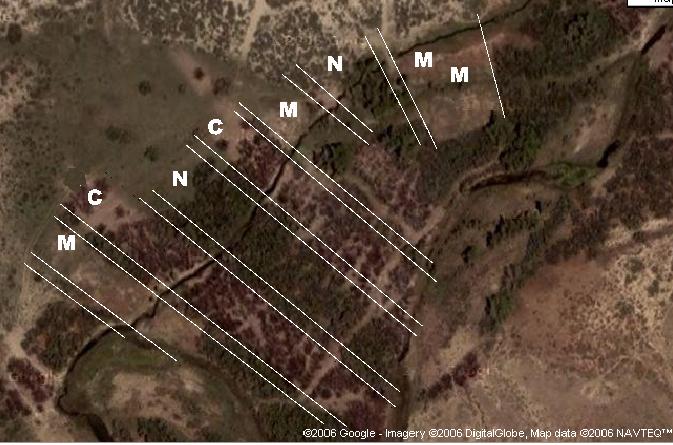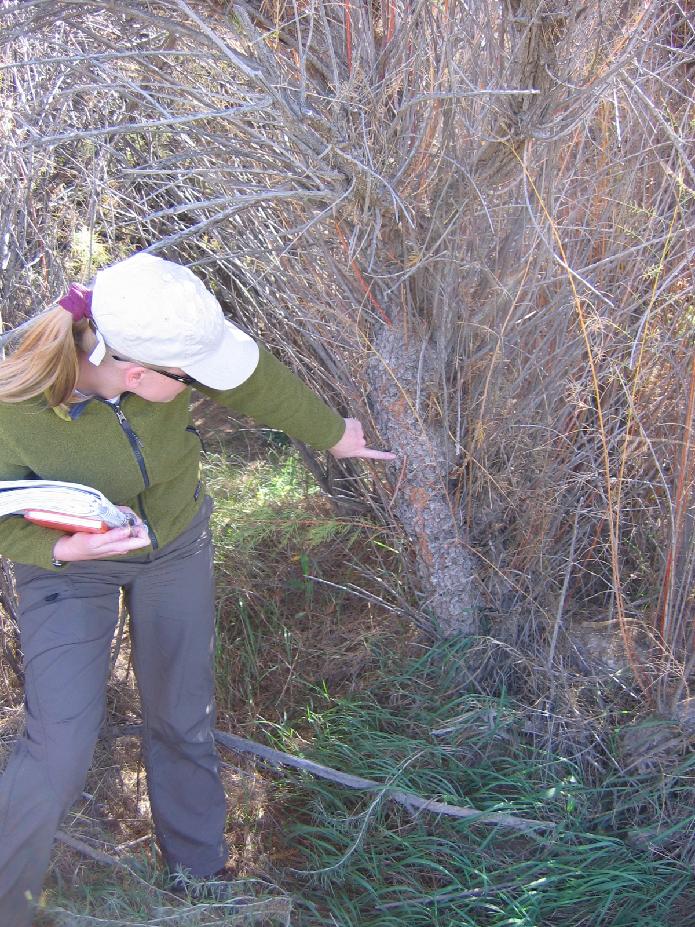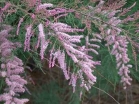-
Restoration and Conservation
-
The Sher Lab is interested in questions that address plant species conservation and plant community restoration in arid areas. This includes large-scale analysis of past restoration projects, and investigation of how removal of woody invasives affects the rest of the ecosystem.
-
Graduate Theses/Dissertations
Shulte, Darin. 2017. Ph.D. Dissertation. “Quantifying and Simulating Fine-Scale Spatial Patterns in Plant Populations.”
Statwick, Joseph. 2016. Ph.D. Dissertation. “The Ecology and Evolution of Rare, Soil Specialist Astragalus Plants in The Arid Western U.S.”
El Waer, Hisham. 2013. Ph.D. Dissertation. "Vegetation Response After Invasive Tamarix spp. Removal in the Riparian Zone and Semi-arid Rangeland Ecosystems."
Ohrtman, Michelle. 2009. Ph.D. Dissertation. "Tamarix spp. Impacts on Environmental Salinity."
Carroll, Stephanie. 2009. M.S. Thesis. "Impacts of tamarisk biocontrol (Diorhabda elongata) on the trophic dynamics of terrestrial insects in monotypic tamarisk stands."
Gaddis, Margaret. 2008. M.S. Thesis. "Russian Olive & Restoration of Riparian Ecosystems."
Gieck, Stephanie. 2006. M.S. Thesis. "Restoration of Tamarisk Invaded Lands."
Bay, Robin. 2006. M.S. Thesis. "Active Revegetation After Tamarix spp. Removal."
-
Undergraduate Honors Theses
- Moffitt, Ian. 2017. “Tamarix Management, Salix Restoration, and the Conservation of the Southwest Willow Fly Catcher”
- Williams, Anna. 2016. “The Pollination Ecology of Blakea attenboroughii (Melastomataceae): Buzz-pollination in the Ecuadorian Cloud Forest”
- Biedron, Robert. 2016. “The Effect of Tamarisk Removal Methods on the Native Plant Community and Tamarisk Density”
- Peterson, Matthew. 2016. “Do noxious species behave similar to exotics? A case study with Tamarix control”
- Roney, Delaney. 2014. “The Impacts of Climate Change on Blueberry Phenology: Climate Changes in the Northeastern United States from 1893 to 2013” received distinguished thesis award
- Hathorn, Mary-Louise. 2014. “Shift in Phenology for a Colorado Plant Species Associated with Climate Change and Heat Island Effects
- Williams, Jessica. 2012. "Mycorrhizal associations in Pascopyrum smithii (western wheatgrass) under water stress and salinity stress."
- Catanach, Brittany. 2011. "Resource allocation to growth, reproduction, and defense: chlorogenic acid production in Achillea lanulosa (western yarrow)."
- Zableckas, Urte. 2008. "Soil analysis after Elaeagnus angustifolia removal: understanding restoration implications."
- Lumpkin, Christie. 2007. "Patterns of chlorogenic acid production in wild collected Achillea lanulosa (western yarrow)."
-
Photos from Projects
-
Satelite photo of research site

This is a GoogleEarth image of one of our restoration sites. One can see the distinction between the 'M' mechanically cleared plots versus the 'C' chemically cleared plots and the 'N' no treatement plots. Each plot is 20 m wide with a 5 m buffer on either side.
-
Response to Biological Control
 This photo shows the damage caused by Diorhabda elongata, the biological control agent for Tamarix, near Stephanie's field sites in Moab, UT
This photo shows the damage caused by Diorhabda elongata, the biological control agent for Tamarix, near Stephanie's field sites in Moab, UT
-
Growth response to Imazapyr
 This photo shows the strange growth that can be exhibited on trees that have been sprayed with Imazapyr herbicide, commonly used for Tamarix.
This photo shows the strange growth that can be exhibited on trees that have been sprayed with Imazapyr herbicide, commonly used for Tamarix.
